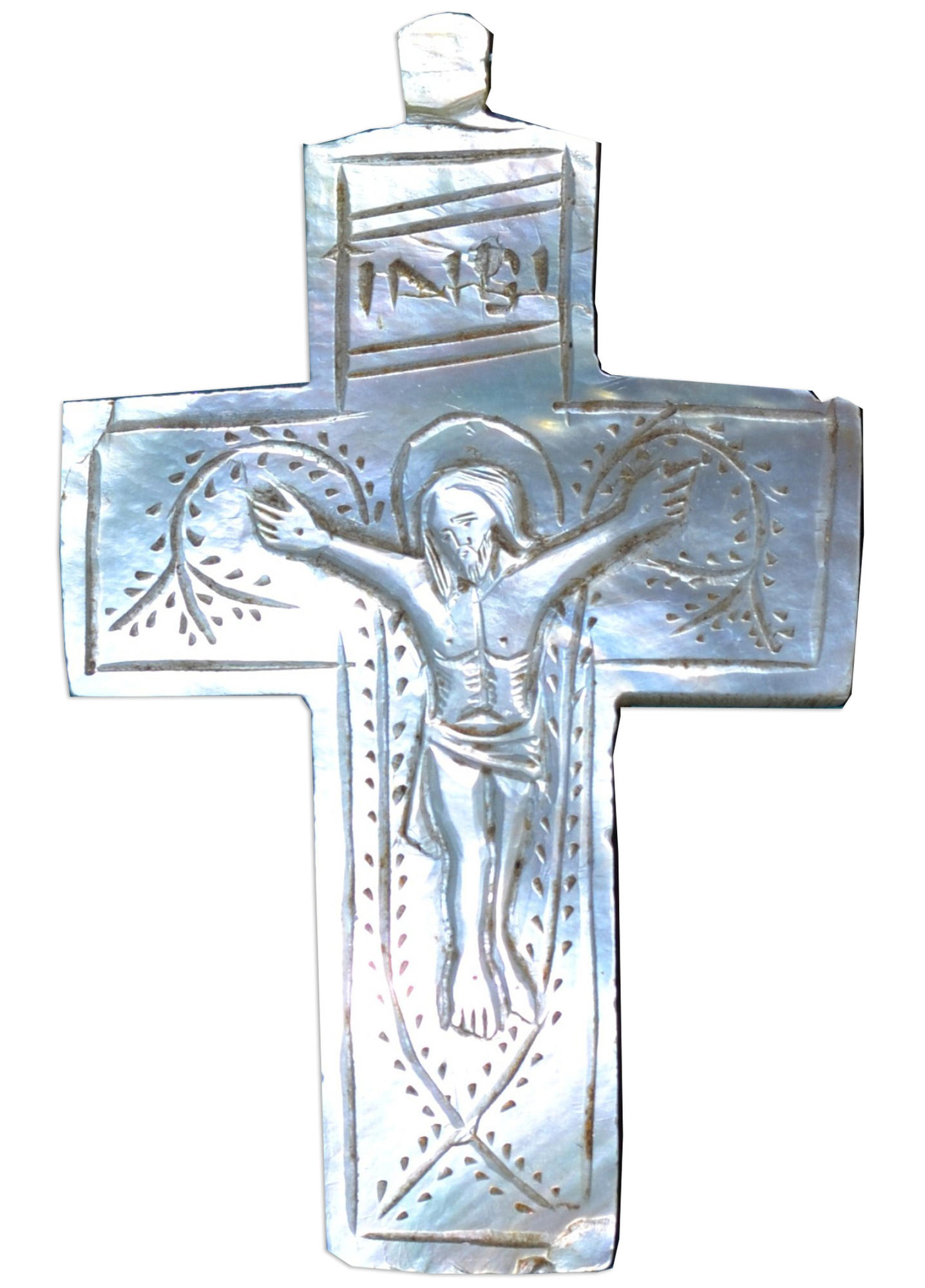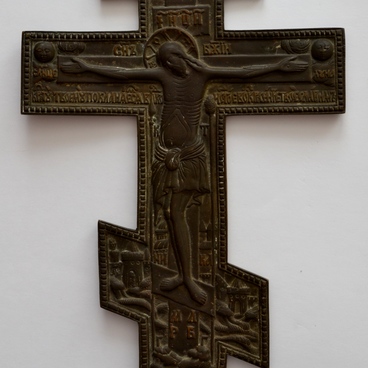The cross is the main and the most wide-spread symbol in Christianity. This cross made by an unknown master in the 19th - early 20th century is from the home relic collection of the noble family of the Yesipovs. They lived in an estate called Belaya Yaruga near the city of Tambov. The successors of this noble family moved to Iskitim. In 2010, they donated the cross to the Iskitim Municipal Museum of Arts and History.
The cross is made from mother of pearl. Such items were wide-spread in Jerusalem. Mother of pearl was a cheap and available material — it was produced from near-shore waters and was used to make crosses, icon pendants, icons and massive crosses for altars.
The Yesipovs had the cross after their pilgrimage to the Holy Land. In the 19th -early 20th century, Russian believers often visited Jerusalem. By that time, Palestine had become the craft centre of making mother-of-pearl crosses. Before that – in the 17th-18th centuries – it was Greek Peninsula Athos. In Jerusalem itself, a shell-carving school opened at the beginning of the 19th century.
Mother-of-pearl crosses became an important part of the Christian tradition. Pilgrims brought from the Holy Land to Russia the material and things made from it, and Russian masters learned from them. Thanks to that such articles survived to our time.
The cross is made from mother of pearl. Such items were wide-spread in Jerusalem. Mother of pearl was a cheap and available material — it was produced from near-shore waters and was used to make crosses, icon pendants, icons and massive crosses for altars.
The Yesipovs had the cross after their pilgrimage to the Holy Land. In the 19th -early 20th century, Russian believers often visited Jerusalem. By that time, Palestine had become the craft centre of making mother-of-pearl crosses. Before that – in the 17th-18th centuries – it was Greek Peninsula Athos. In Jerusalem itself, a shell-carving school opened at the beginning of the 19th century.
Mother-of-pearl crosses became an important part of the Christian tradition. Pilgrims brought from the Holy Land to Russia the material and things made from it, and Russian masters learned from them. Thanks to that such articles survived to our time.


